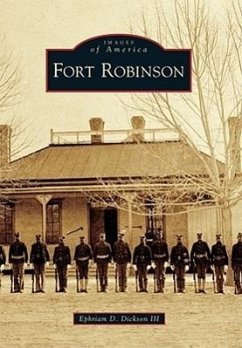Established in northwestern Nebraska in 1874, Fort Robinson served as a military post for nearly 75 years, playing a critical role in the settlement of the West. From here, soldiers marched out to participate in the Great Sioux War of 1876-1877. The famous Oglala leader Crazy Horse was killed at the post. In 1878, Dull Knife's band of Northern Cheyenne attempted to escape the post, resulting in more than 64 deaths. Troops from Fort Robinson were also sent to the Pine Ridge Agency during the Ghost Dance fervor in 1890, the last of the armed conflicts with the Lakota. The arrival of the railroad at Fort Robinson initiated a new role for the post in the 20th century. Between 1885 and 1907, Fort Robinson was home to the 9th and 10th Cavalry, the famous buffalo soldiers. In 1919, Fort Robinson became a remount depot where horses and mules were purchased and conditioned for issue to the army. During World War II, Fort Robinson included a German POW internment camp and the site of the army's largest war dog reception and training center. The fort closed in 1948 and was made a state park in 1972.
Bitte wählen Sie Ihr Anliegen aus.
Rechnungen
Retourenschein anfordern
Bestellstatus
Storno

